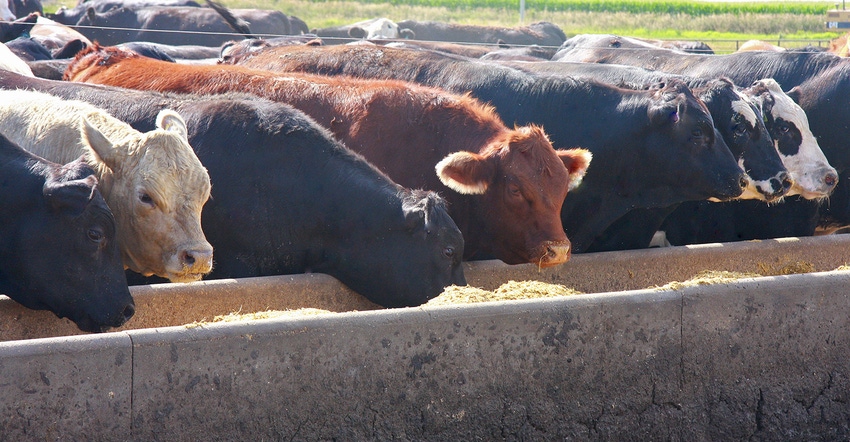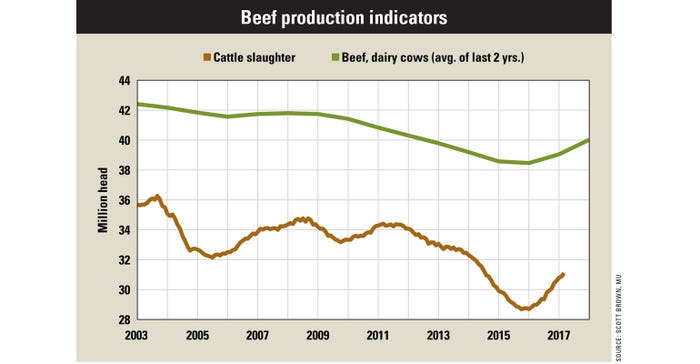June 5, 2017

Cattle and beef prices have recovered nicely this spring. In the past three months, cash fed steer and feeder steer values have increased about $15 per cwt, with the choice boxed beef price jumping more than $50. This has fueled optimism that the current and projected heavy beef supplies of the next couple of years may not deflate prices as much as previously thought. In fact, USDA’s May estimate for fed steer prices in the fourth quarter of 2017 at $113 to $123 per cwt was about $10 higher than the projection from February.
There are certainly reasons to feel much better about cattle markets due to three recent developments.
1. Lighter weights. Increases in cattle slaughter have been modified by slaughter weight declines, limiting the quantity of additional beef being produced.
2. Economy improves. Consumer confidence and unemployment measures for the U.S. economy continue to post very positive levels, signaling that domestic meat demand is on solid ground.
3. Export opportunities. Beef export levels continue to impress, and the recent indications by China that U.S. beef shipments will resume to that nation after a 13-plus-year ban due to BSE are very exciting.
A little caution
Demand factors tend to have the biggest short-term effect on market psychology, but they also tend to be the most volatile. It is certainly possible that beef shipments to China could ramp up significantly once exporting protocols are agreed upon and released.
It is certainly possible that U.S. consumer demand for beef could continue to be powered by a strengthening economy and reach new highs. All of us associated with the cattle industry hope that this will be the case. But we do know one component of the supply and demand balance with a little more certainty, and that is cattle supplies.

Keep an eye on supply
There is a noticeable relationship between cattle slaughter levels and the size of the cow herd. The graph above plots the relationship since 2003, along with the reminder that the beginning cow inventory levels of 2017 will lead to even higher cattle slaughter in 2018. It is also highly likely that the inventory count for January 2018 will imply a continued rise in cattle slaughter through 2019.
And don’t forget the contribution of cattle weights to the beef supply. April marked the 12th consecutive month that dressed cattle weights have been below the year-ago level. In the last 20 years, weights have fallen relative to the previous year only about 28% of the time, and there was only one stretch (February 2003-March 2004) when weight declines versus the year-ago figure lasted longer than the current streak. We may soon resume a situation where increasing weights add to beef supply growth, as opposed to having a moderating effect.
A wise market participant remains aware of all factors impacting price, positive and negative, short-term and long-term. Marketing cattle (and analyzing cattle markets) will continue to be a risky endeavor, so know how much risk you are willing and able to bear, as well as the tools available to manage future uncertainty. If we are about to continue a demand-driven price rally, enjoy the ride; but if bearish supply factors again take control over markets, be prepared.
Brown is a livestock economist with the University of Missouri. He grew up on a diversified farm in northwest Missouri.
About the Author(s)
You May Also Like




